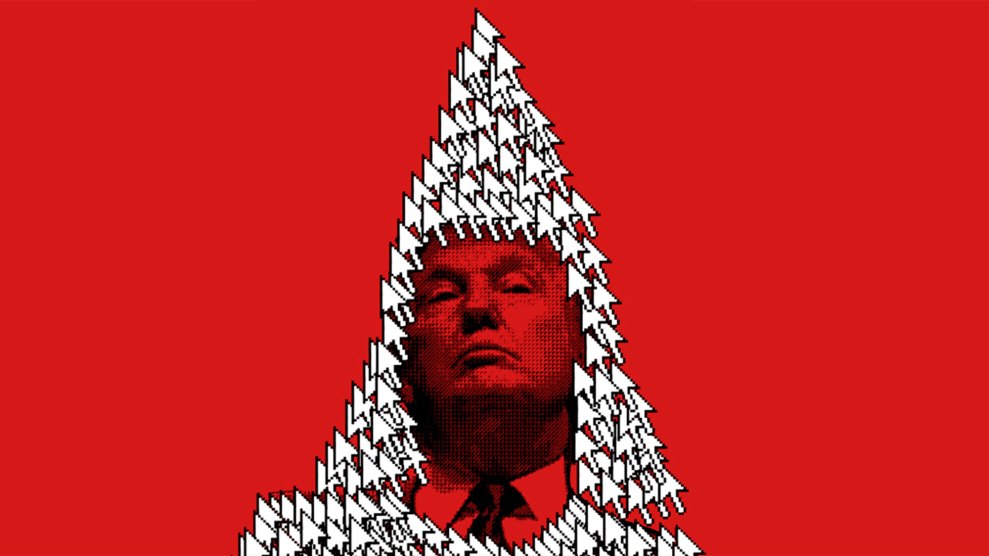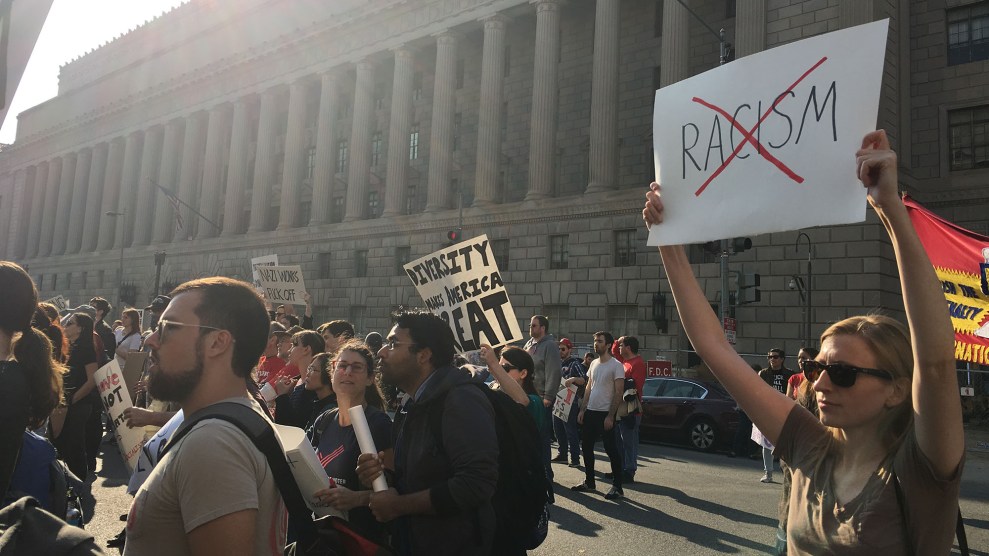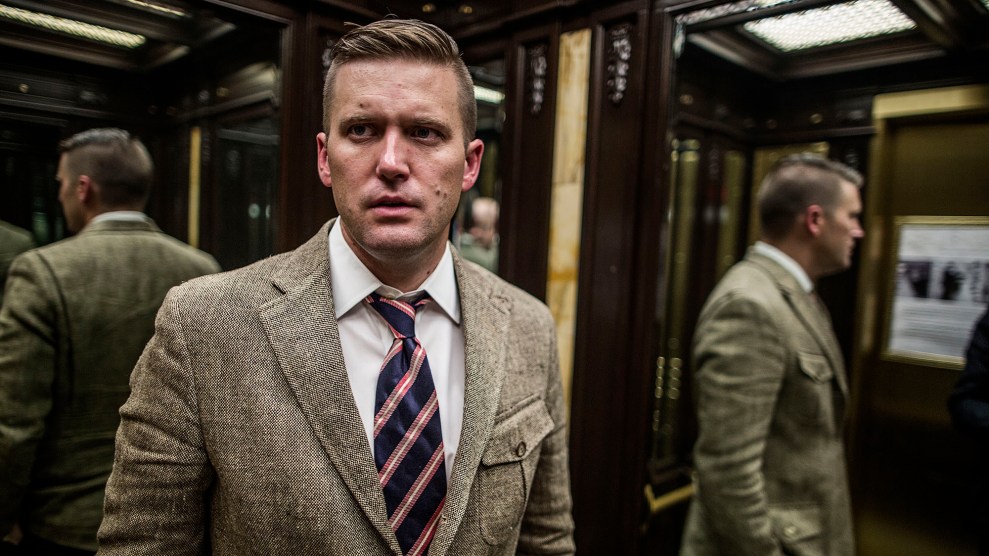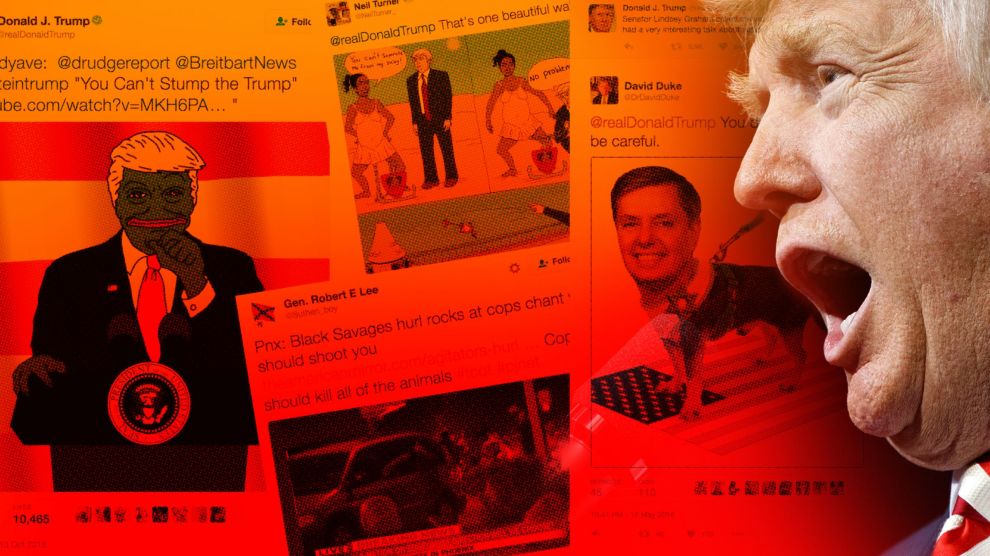
<a href=http:https://www.flickr.com/photos/gageskidmore/8566717881/in/photolist-e41ELr-e41GhK-e47i8s-e47hS1-e47hxW-e41EUk-e47mPN-e47jAC-e41Jw8-rWKt8s-rWHUgf-rWJfw5-cJjFP-e47hHh-rWKnwC-9v9wdj-9VQfNH-g25GLQ-5nrmkz-g1XPzf-g25NZH-c8zKr7-9hgBjx-5nrmkt-4SQYDD-9mEwWW-g25Md6-c8cbaC-rpJw2x-d5X6uS-9hNwso-9C4Xts-9yDPEb-r6wRV8-g25LFz-oskUH-9DB5bx-CwCef8-CDVvCg-C6qcD4-C6qaRX-CwCjmv-BGpJm1-Cuniqq-BGpAmd-FzbUCw-CwCd3P-FBtMxx-CBBxn7-CDVuwt">Gage Skidmore</a>/Flickr and AP
Fresh off of a presidential campaign marked by xenophobia and racial demagoguery, Donald Trump for the first time today responded to a question about his support from the white nationalist movement known as the alt-right. In a meeting with the New York Times, Trump told reporter Maggie Haberman that the alt-right is “not a group I want to energize. And if they are energized, I want to look into it and find out why.”
That Trump would not know or acknowledge that he has galvanized the alt-right strains credulity. As Mother Jones reported today, the president-elect’s rhetoric has for months been an enormous boost for a movement characterized by hostility toward women, people of color, and religious minorities. Our six-month investigation details Trump’s alt-right ties. He has tweeted an image of himself as Pepe the Frog, the alt-right’s mascot; appointed a white nationalist as a delegate in California; and for months failed to disavow his unprecedented support from a wide range of high-profile white supremacists.
During today’s meeting with the Times, Trump also claimed that his chief strategist, Stephen Bannon, the executive chairman of Breitbart News, is not affiliated with the alt-right. “If I thought he was racist or alt-right or any of the things, the terms we could use, I wouldn’t even think about hiring him,” Trump said.
“We are the platform for the alt-right,” Bannon told Mother Jones at the Republican National Convention in July. Breitbart News had by then published a guide to the alt-right in which the pundit Milo Yiannopoulos said the movement opposes “full ‘integration'” of racial groups: “The alt-right believe that some degree of separation between peoples is necessary for a culture to be preserved.” The piece cited Richard Spencer—who this weekend held a conference marked by Nazi salutes and anti-Semitic comments—as “a center of alt-right thought.”
Later on in Trump’s meeting with the Times, he was asked to comment on Spencer’s conference. “I condemn them,” Trump said. “I disavow and I condemn.” He also specifically disavowed the alt-right.
The outpouring of hate following Trump’s victory began before he’d even finished his speech on election night, when someone in the audience yelled, “Hang Obama!” Reports of racist attacks and graffiti spread across the country in the following days, including assaults on hijab-wearing women, bullying of immigrant children, and accounts of Trump supporters on high school and college campuses yelling “white power” or spitting at people of color.
With Bannon’s White House appointment and Spencer’s antics, Trump’s connection to the far right finally got a burst of mainstream media coverage. But there still has been very little exploration of how broad-based the so-called alt-right is, what it aims for, and where it’s headed. Here is an in-depth look at the main elements of this disparate but ascendant movement.
















